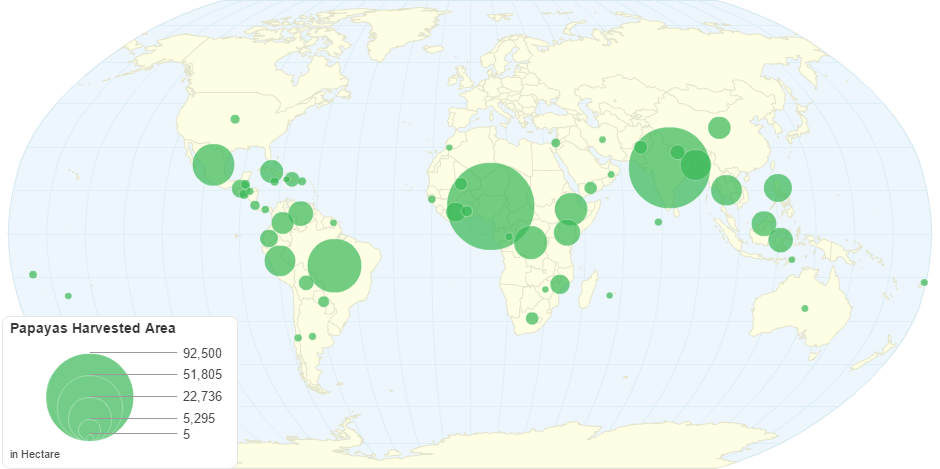This chart shows Papayas Harvested Area by Country.
The papaya is the plant Carica papaya, one of the 22 accepted species in the genus Carica of the family Caricaceae.It is native to the tropics of the Americas, perhaps from southern Mexico and neighboring Central America.It was first cultivated in Mexico several centuries before the emergence of the Mesoamerican classical civilizations.
The papaya is a large, tree-like plant, with a single stem growing from 5 to 10 m tall, with spirally arranged leaves confined to the top of the trunk. The lower trunk is conspicuously scarred where leaves and fruit were borne. The leaves are large, 50–70 cm in diameter, deeply palmately lobed, with seven lobes.
Unusually for such large plants, the trees are dioecious. The tree is usually unbranched, unless lopped. The flowers are similar in shape to the flowers of the Plumeria, but are much smaller and wax-like.
Papaya plants grow in three sexes: male, female, hermaphrodite. The male produces only pollen, never fruit. The female will produce small, inedible fruits unless pollinated. The hermaphrodite can self-pollinate since its flowers contain both male stamens and female ovaries. Almost all commercial papaya orchards contain only hermaphrodites.
Papaya is native to Central and northern South America and has become naturalized throughout the Caribbean Islands, Florida and several countries of Africa. Additional crops are grown in India, Australia, Malaysia, Indonesia, the Philippines, and the U.S. state of Hawaii.
9 years ago

